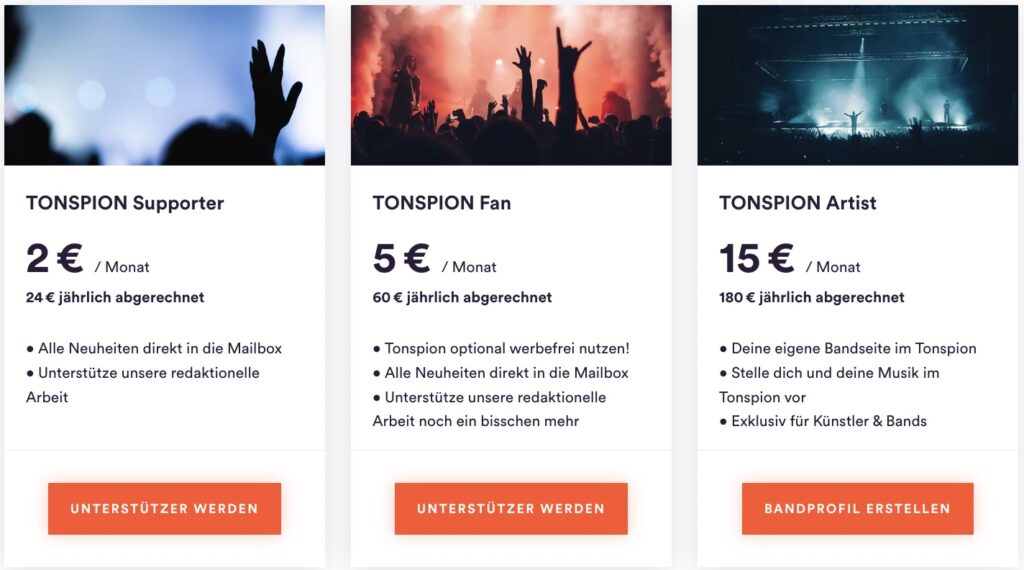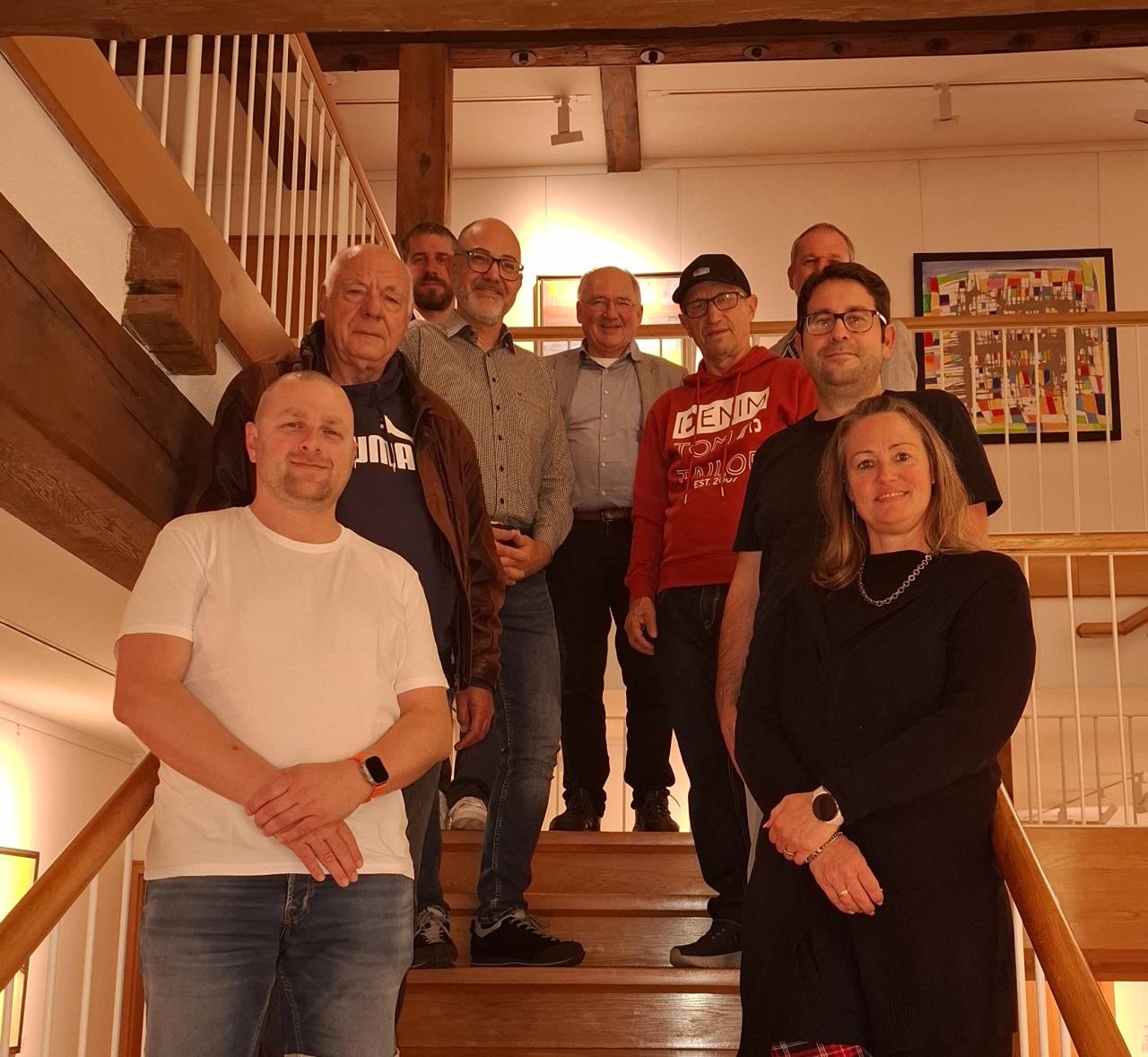In November 1999, Archive.org archived the first version of Tonspion as a snapshot for posterity. An incredible amount has happened since then and the Internet has changed massively. But the sound spy is still there.
Tonspion is celebrating its 25th anniversary – a digital success story that began in 1999 and is far from over today. Back then there was no Spotify, no iTunes and no Instagram, and music on the internet was one thing above all else: new territory.
Udo Raaf started the blog as the first German online music offering to provide free MP3 downloads from artists and labels, making it the first music magazine to listen to. While masses of music were illegally downloaded onto hard drives via Napster and CD sales collapsed, Tonspion brought new, legal ways of downloading music into play.
Sound spy as a “blueprint” for the digital music medium
From the very beginning, Tonspion not only stood for exciting new discoveries, but also for the idea of combining music and journalism online. Where classical music magazines largely ignored the Internet, Tonspion went its own way early on. This is what FM4 Tonspion called the “blueprint of a new music medium”. Back then, anyone looking for music online ended up at Tonspion – there was simply no other legal online option for listening to music.
From MP3 blog to digital pop culture magazine
Act of the Month: The Fantastic Four
When iTunes made music downloads commercial in the mid-2000s and Spotify ushered in the streaming age in 2008, Tonspion also developed further. The pure download blog became a pop culture magazine that has now reached over 500,000 readers. A multiple of the classic print magazines. In addition to music, there are now also new releases from film, TV, games and the podcast world. Nevertheless, even after 25 years, Tonspion remains primarily a guide for music lovers. Because one thing is clear: With the abundance of music, the desire for orientation is greater than ever.
While we initially filled a gap – back then there was almost no music available legally online and we had to laboriously get every single song released by the labels – today we sort and filter the excess. Both are important. Nobody can still listen to all the music that is released on streaming platforms week after week. And anyone who leaves their playlists to an algorithm can no longer be helped.
Today, we too are only able to listen to and sort through countless new releases with the help of specialized promo platforms that enable us to discover new music that no one knows yet. Our mailbox is completely flooded and it is simply no longer possible to hear everything that is being sent to us.
Music journalism is alive – just not in print format
At a time when most print music magazines folded or depended on large media companies, Tonspion maintained its independence. Today, music journalism may only be laughed at as a hobby for a few nerds, but the demand for well-founded, editorial content is still huge. After all, even in the streaming age, people not only want to consume music, but also want to engage with it, find out information and discuss it.
The Tonspion editorial team, consisting of journalists and musicians, regularly discusses and votes on the best albums of the month and regularly brings out completely different favorites than the algorithms of the streaming providers or the charts. That’s why it still makes sense today to deal intensively with music. It gives us the chance to discover new things, go beyond our own filter bubble and expand our musical horizons.
Social media and the changing nature of music reporting
The competition for attention online has changed. Today, the music industry’s advertising budgets flow less into music magazines and more into social media giants like Instagram and YouTube. Music media have a hard time competing against platforms that constantly tweak the algorithm and have little left for music fans. Tonspion was able to assert itself by focusing on its own website and exclusive content – an independence that pays off in the long term, even if budgets in the music industry are always notoriously tight and today predominantly flow into the coffers of the US tech giants and nothing more in local indie structures.
Tonspion Membership: New ways of refinancing
For the 25th anniversary, Tonspion has released Steady Membership Modell introduced and thus gives readers of the magazine the opportunity to easily support the work of the editorial team. With just a few euros per month, Tonspion can become increasingly independent of shrinking advertising budgets over the next few years and continue to expand its work.
We would like to thank everyone who has supported us over the years and continues to support us through membership.
The year 1999: What else happened
1999
Google was just 1 year old and was a student project
Napster started out as a file-sharing platform
Schröder had just become chancellor
We still paid with D-Marks
Mark Zuckerberg was 15 years old and still in high school
There Was No iTunes Yet (2001)
There Was No Spotify Yet (2006)
Streaming subscriptions were a vision of the future for the music industry by a few crazy people
Were we afraid of the Millenium Bug, which could cripple all computers worldwide?
9/11, Trump and climate catastrophe were still far away and the signs of the times pointed to world peace
Sound spy from 1999 to today
Archive.org took the first screenshot of Tonspion on November 28, 1999. Here are the different versions of Tonspion over the years.
1999 Circa. 0.9
Tonspion initially started as a private project by Udo Raaf to learn HTML. Unfortunately, nothing of this version can be found anymore. In 1999, the Napster file-sharing platform experienced huge popularity and “sucking music” became a mass phenomenon due to the lack of legal alternatives. For the first time, you could get music directly from the internet at home and no longer had to go to a record store. MP3s were popular and everyone wanted them. Tonspion became the guide to music on the Internet and quickly gained popularity.
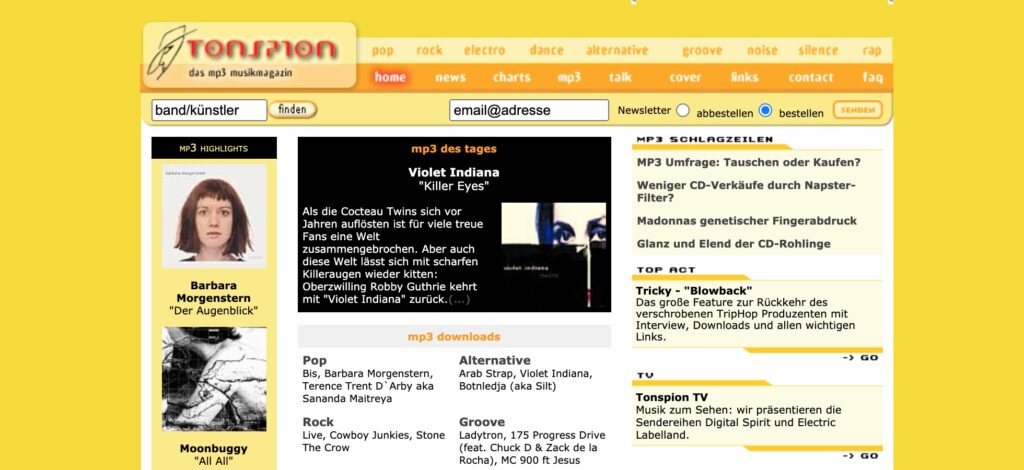
2000 Circa. 1.0
Since there were still no legal MP3 offerings in 2000, more and more artists and indie labels were putting music online for free download. The idea is that fans should purchase music directly from the producer rather than using file-sharing platforms. There was more and more first-class music available legally for download and Tonspion presented it and reported on the digital upheaval in the music business. Tonspion remained unabatedly popular and was even nominated for the Grimme Online Prize in 2004 and 2005.
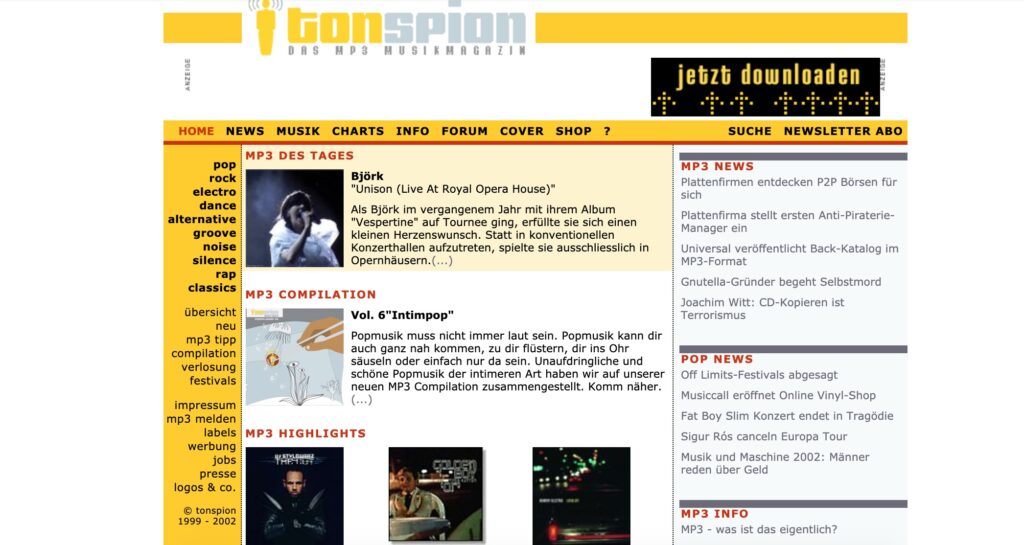
2006 Circa. 2.0
On April 28, 2003, the Apple iTunes Music Store went online with 200,000 music tracks available for paid download for an average of 1 euro per song. Now there was finally a legal source for MP3 downloads, but it was only reserved for Apple users. The music industry continued to rely on the now superfluous sound recording as a business model and used its lawyers to nip everything else in the bud.
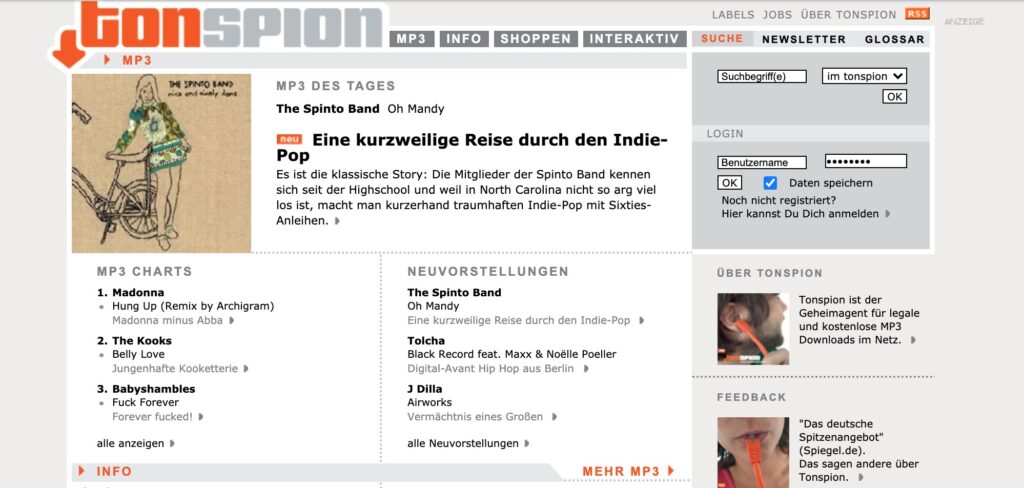
2009 Circa. 3.0
Spotify was founded in Sweden in 2006, but it would take until 2012 before the streaming provider launched in Germany and suddenly made downloading music superfluous. As a result, Tonspion suddenly no longer had to deal with a shortage, but with a huge abundance and presented new music regardless of the file format. The effort involved in running a music editorial office became ever greater, but the music industry’s advertising budgets continued to go to print magazines, even though their circulation was shrinking massively.
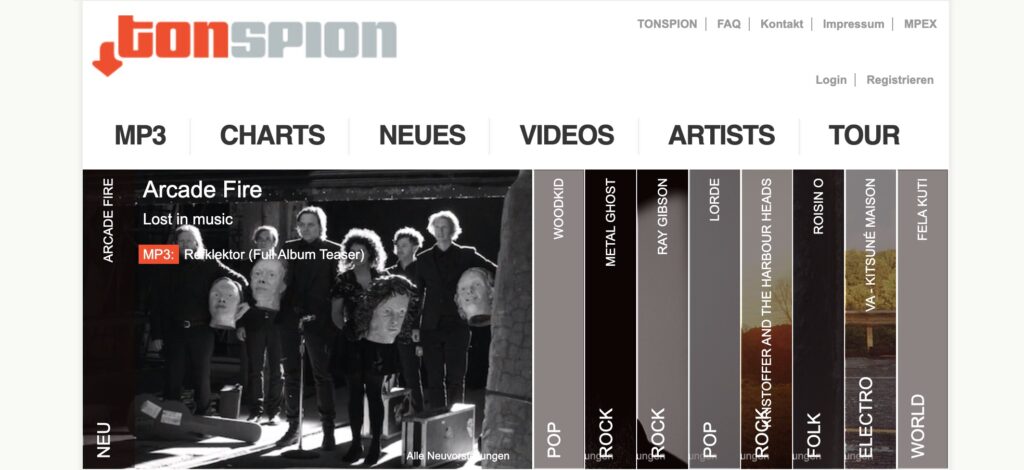
2016 Circa. 4.0
Spotify and other streaming services have radically changed the music business. Nobody downloads music anymore, everyone can publish their music directly online and no longer even needs a label. Since it is hardly possible to win new readers with music in the completely fragmented music scene, Tonspion is expanding its offering and also reports on other topics that still interest music fans: series, films and podcasts in particular have become increasingly popular and the selection is not quite as unmanageable here as with music.
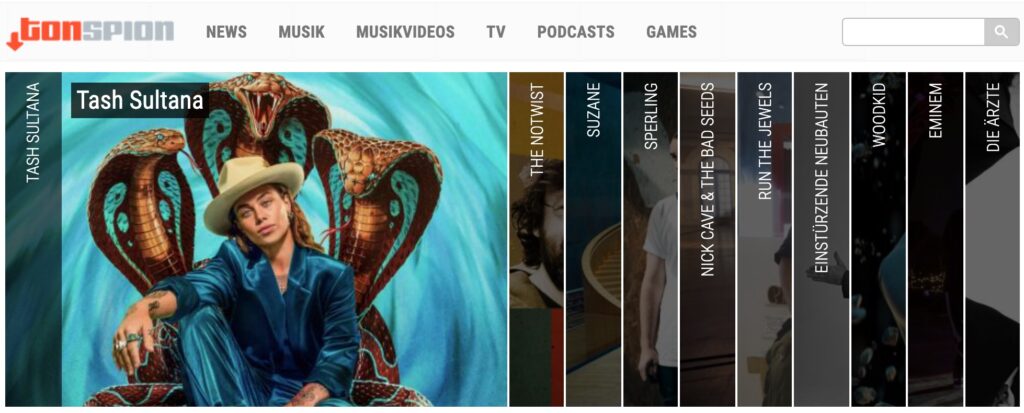
2021 Circa. 5.0
The music magazines have largely disappeared due to a lack of advertising revenue, Tonspion is now filling a market niche again with its offering and is trying to provide orientation. Thematically, we have opened up and now cover everything that music fans are interested in: in addition to new music releases, music videos and concerts, there is also film and TV, especially Netflix, Amazon Prime Video and Co. But also podcasts, audio equipment, games and current ones Trends in the digital world are topics at Tonspion that we will continue to expand in the future.

Although there are still numerous free MP3 downloads from Tonspion today, after all we feel committed to our history, but of course downloads play a completely subordinate role today. Nevertheless, some artists continue to release music directly for their fans and beyond Spotify, so there are still some exclusive treasures to be found.

